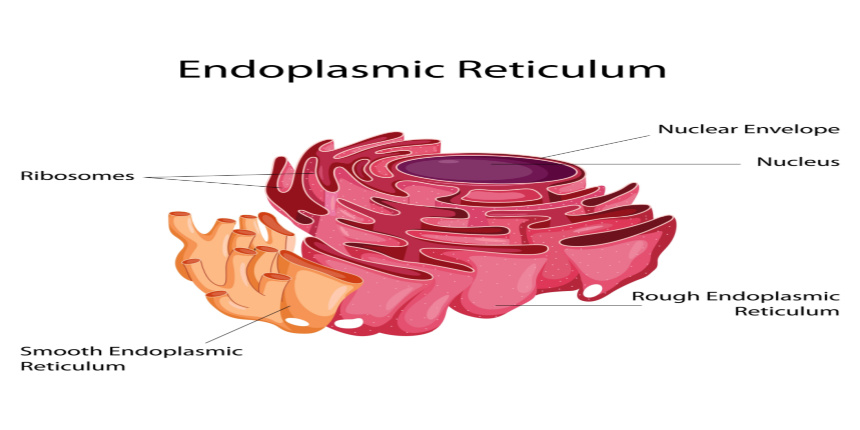RER Full Form
What is the full form of RER?
RER stands for Rough Endoplasmic Reticulum. It is also known as the granular endoplasmic reticulum. It has a rough appearance and is densely packed with protein-synthesizing ribosomes. The translocon is the binding site for the ribosome on RER. Ribosomes are not stable components of RER as they are constantly attached and liberated from the membrane. A ribosome binds to the RER only when a certain protein-nucleic acid complex occurs in the cytoplasm. The RER membrane connects to the nuclear envelope that encircles the cell nucleus. The RER is also close to the Golgi apparatus that transports, and alters bundles of proteins before delivering them to specific locations. Many proteins are packed into vesicles and transferred to the Golgi apparatus after being produced in the RER.
- What is the full form of RER?
- Structure of RER
- Difference between RER and SER
- Functions Relying On RER

Structure of RER
The name RER is due to its rough appearance
It has a network of flattened sacs joined by a network of ribosomes on the outer surface
In the liver and glands, it generates and secretes hormones and proteins
Rough ER is abundant in cells like hepatocytes (Liver cells), where protein synthesis occurs.
Difference between RER and SER
RER has ribosomes attached on their membrane whereas SER do not ribosomes on the membrane
RER has rough appearance while SER has smooth appearance
RER synthesizes proteins and enzymes while SER has role in steroid, lipid and glycogen production
RER has role in lysosome formation while SER forms spherosomes/ oleosomes
Functions Relying On RER
Lysosomal enzyme synthesis: Lysosomes are the enzymes that help in the breakdown of all biological polymers. These enzymes are produced by RER and transported to the golgi body.
Protein synthesis: The ribosome is the universal site for protein synthesis. It translates the mRNA (messenger RNA) to amino acid sequences.
Glycosylation: It is an enzyme-catalyzed reaction where newly synthesized proteins are ubiquitously modified.